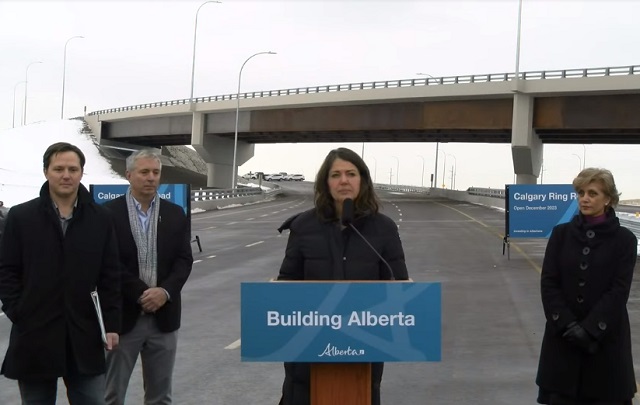Calgary
The Next Move For The Centre for Child and Adolescent Mental Health

The Centre for Child and Adolescent Mental Health, which is expected to open in the fall of 2021, is an upcoming facility to help people who struggle with mental health problems, as well as addictions, according to a CBC article. I believe that this is a very good idea, as there are people struggling with mental health in Calgary, and it isn’t just an issue adults face.
One unique idea the CBC article mentions about the project is that the people using the project will be able to sleep in their own homes at night. While I personally do not have much experience with mental health issues, I do find it more comfortable to sleep in my own room then somewhere completely new. I believe that idea would be useful to those dealing with mental health issues, if they feel the same way I do about sleeping arrangements, it would be a much more comfortable situation for the patients.
One aspect about this program that Alberta Health Services mentioned is that it will not have any beds for overnight stays. While it would be nice to have beds for overnight stays if the patient needs that type of therapy, Alberta Health Services said there are other places in Calgary that do have overnight stays, such as Alberta Children’s Hospital. According to the CBC article, David Weyant, who is an AHS board chair, said that the facility will make sure that patients that were hospitalized have a smooth transition back into the community, as well as going helping patients return home earlier, which suggests to me that the facility is meant to help people leave a hospitalized environment. Also, while it would be ideal for one place to have everything needed for mental health treatment, I’m not sure if that’s possible, so maybe leaving out overnight treatment is a good place to stop. Overall, while it would be nice if they included inpatient treatment if needed, there are places to cover that part of treatment.
There are several aspects of the program I like. The first aspect is the fact that they chose to include not only the thoughts of mental health centres worldwide when designing the program, but also the thoughts of young people and the families of young people who live in Calgary, according to the CBC article. I feel as though that it’s important, because while there is information to be gained from people who have had built similar facilities before, there is also the consideration of what would work specifically where the facility would be. For example, let’s just hypothetically say that there were no beds for youths that need inpatient care. That issue could come up when talking about issues that should be addressed, and maybe The Centre for Child and Adolescent Mental Health would include inpatient care. However, since there are places for inpatient mental health care in Calgary, the people designing the facility may not have considered it to be important.
Overall, I like the idea of the Centre for Child and Adolescent Mental Health. I would like to see how mental health in Calgary improves after the facility is open.
References
Alberta Health Services (May 25,2018) “Calgary Centre for Child and Adolescent Mental Health”. Retrieved from https://www.albertahealthservices.ca/assets/about/capitalprojects/ahs-cp-calgary-ccamh-q-and-a.pdf
Valleau, N. (Nov. 23, 2019). CBC. ‘Critical Lifesaving Project:’ New mental health centre for youth to open in Calgary. Retrieved from https://www.cbc.ca/news/canada/calgary/centre-child-adolescent-mental-health-calgary-addiction-1.5369854
Alberta
Building a 21st century transit system for Calgary

From the Frontier Centre for Public Policy
Calgary Transit is mired in the past, building an obsolete transit system designed for an archaic view of a city. Before the pandemic, transit carried 45 percent of downtown Calgary employees to work, but less than 10 percent of workers in the rest of the Calgary urban area, showing that Calgary Transit doesn’t really serve all of Calgary; it mainly serves downtown.
That would have worked in 1909, when Calgary’s first electric streetcars began operating and most jobs were downtown. By 2016, less than 15 percent of Calgary jobs were downtown, and the pandemic has reduced that number further.
Rather than design a transit system that serves the entire urban area, Calgary Transit light-rail system reinforced its downtown focus. Transit ridership has grown since the city’s first light-rail line opened in 1981, but it was growing faster before the light rail began operating than it has since then. Now Calgary Transit is planning even more downtown-oriented light-rail lines.
Light rail is an expensive form of low-capacity transit. The word “light” in light rail refers not to weight but to capacity: the American Public Transportation Association’s transit glossary defines light rail as “an electric railway with a ‘light volume’ traffic capacity.” While a light-rail train can hold a lot of people, for safety reasons a single light-rail line can move no more than about 20 trains per hour in each direction.
By comparison, Portland, Oregon runs 160 buses per hour down certain city streets. An Istanbul busway moves more than 250 buses per hour. Bogota Columbia busways move 350 buses per hour. All these transitways cost far less per mile than light rail yet can move more people per hour.
Once they leave a busway, buses can go on any city street, reaching far more destinations than rail. If a bus breaks down or a street is closed for some reason, other buses can find detours while a single light-rail breakdown can jam up an entire rail line. If transportation patterns change because of a pandemic, the opening of a new economic center, or the decline of an existing center, bus routes can change overnight while rail routes take years and cost hundreds of millions of dollars to change.
To truly serve the entire region, Calgary Transit must recognize that buses are faster, more flexible, and can move more people per hour to more destinations at a lower cost than any rail system. It should also recognize that modern urban areas have many economic centers and use buses to serve all those centers.
Besides downtown, Calgary’s major economic centers—the airport, the University of Calgary, Chinook Center, the Seton health center, and others—are mostly located near freeway on- and off-ramps. Calgary Transit should identify ten or so such centers geographically distributed around the region. It should locate transit centers—which need be no more than curbside parking reserved for buses with some modest bus shelters—near the freeway exchanges closest to each center.
It should then operate frequent (up to five times per hour) non-stop buses from every center to every other center. A few secondary transit centers might have non-stop buses operate to just two or three other centers. Local bus routes should radiate away from each center to serve every neighborhood of the Calgary urban area.
Since non-stop buses will operate at freeway speeds, the average speed of this bus system will be more than double the average speed of Calgary’s current bus-and-rail system. Transit riders will be able to get from any corner of the urban area to any other part of the urban area at speeds competitive with driving.
Such a polycentric system will serve a much higher percentage of the region’s workers and other travelers than the current monocentric system yet cost no more to operate. It will cost far less to build than a single rail line since most of the necessary infrastructure already exists. While some may worry that buses will get caught in congestion, the solution is to fix congestion for everyone, not spend billions on a slow rail system that only serves a few people in the region.
It is time for Calgary Transit to enter the 21st century. A polycentric bus system may be the best way to do it.
Randal O’Toole is a transportation policy analyst and author of Building 21st Century Transit Systems for Canadian Cities.
Alberta
Calgary Ring Road opens 10 months early

Christmas comes early for Calgary drivers
The Calgary Ring Road is now ready to be opened to public traffic, several months ahead of schedule.
Calgary’s ring road is one of the largest infrastructure undertakings in Calgary’s history and includes 197 new bridges and 48 interchanges. The 101-kilometre free-flowing Calgary Ring Road will open to traffic Dec. 19, completing a project decades in the making.
“Calgary’s ring road is a project that has been decades in the making and its completion is a real cause for celebration. This has been an important project and our government got it done. With this final section completed, travelling just got a little easier for families and for workers. This will not only benefit Calgarians and residents in the metro region, it will provide a boost to our economy, as goods can be transported more easily across our province.”
Although construction of the entire ring road project began in 1999 under former premier Ralph Klein, discussions on a ring road around the City of Calgary began as early as the 1950s. In the late 1970s, under former premier Peter Lougheed, high-level planning and land acquisition started and a transportation utility corridor was established to make the Calgary Ring Road a reality.
“The final section of the Calgary Ring Road is now complete, and I’d like to acknowledge the work done by former premiers and transportation ministers and their vision to build Alberta. I’m proud to announce that the final section was completed on budget and months ahead of schedule.”
“I’m thrilled to see the Calgary Ring Road project completed. It was something I have helped shepherd through the process since 2014. Finally, all the hard work put in by everyone has become a reality. The Calgary Ring Road will provide travellers with over 100 kilometres of free-flow travel, create new travel options for the City of Calgary and surrounding area and provide improved market access across the region.”
Opening the ring road means new travel options for Calgarians, which will draw traffic away from heavily travelled and congested roads such as the Deerfoot Trail, 16th Avenue, Glenmore Trail and Sarcee Trail. For commercial carriers, the ring road provides an efficient bypass route, saving time and money for the delivery and shipment of goods and services.
“The ring road investment generated thousands of local jobs and will now play an integral role in keeping Calgarians and the economy moving. This important transportation link will ease congestion on city routes and greatly improve connectivity and access for businesses transporting goods.”
The ring road is a critical component to growing economic corridors in Alberta and Western Canada, as it connects the Trans-Canada Highway to the east and west, and the Queen Elizabeth II Highway and Highway 2 to the north and south. It is also part of the CANAMEX corridor, which connects Alberta to the highway network in the United States and Mexico.
The completion of the ring road is a major boost for Calgary, opening new business opportunities and supporting key components of the Calgary economy. It sends a signal to businesses and investors that Calgary has a strong highway infrastructure, providing economic corridor connections through the entire region.
“With one of the smoothest commutes in Canada and the capacity to reach 16 million customers by road within a single day, Calgary offers unmatched quality of life and economic opportunities. The triumphant completion of the Calgary Ring Road further improves our capacity to attract even more companies, capital and talent to our city.”
“This is an exciting step forward for the Calgary Metropolitan Region. This key artery will not only improve the quality of life for the residents of the region, it is also a key economic enabler and we are thrilled to see its completion.”
Quick facts
- Stretched into a single lane, the highway is 1,304 kilometres long, the distance from Calgary to Winnipeg.
- Other sections opened in 2009, 2013, 2020 and 2023.
- The West Calgary Ring Road is the final piece of the ring road project.
-

 Health2 days ago
Health2 days agoTransgender activists are threatening the author of scathing UK report on child ‘sex changes’
-

 Alberta15 hours ago
Alberta15 hours agoAlberta rejects unconstitutional cap on plastic production
-

 conflict2 days ago
conflict2 days agoCol. Douglas Macgregor torches Trump over support for bill funding wars in Ukraine and Israel
-

 Alberta2 days ago
Alberta2 days agoRed Deer Doctor critical of Alberta’s COVID response to submit report to Danielle Smith this May
-

 Alberta2 days ago
Alberta2 days agoAlberta’s baby name superstar steals the show again
-

 Censorship Industrial Complex2 days ago
Censorship Industrial Complex2 days agoNow We Are Supposed to Cheer Government Surveillance?
-

 Fraser Institute2 days ago
Fraser Institute2 days agoBill Maher is right about Canadian health care
-

 Alberta13 hours ago
Alberta13 hours agoAlberta official reveals ‘almost all’ wildfires in province this year have been started by humans








